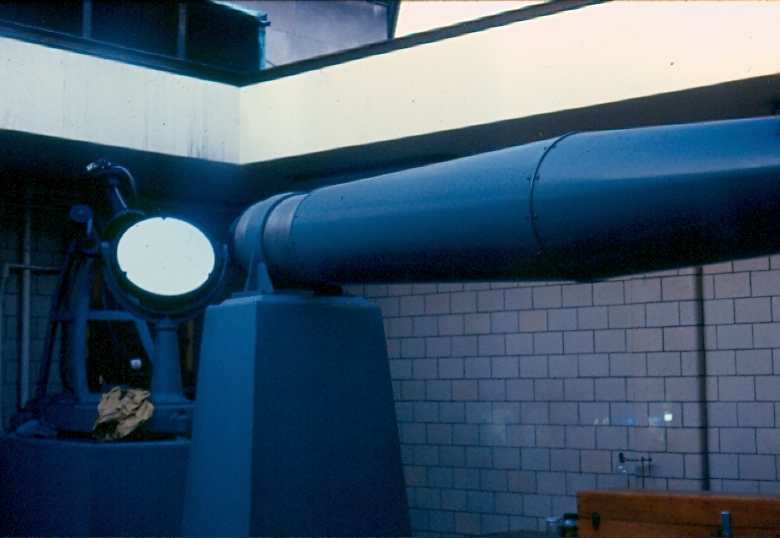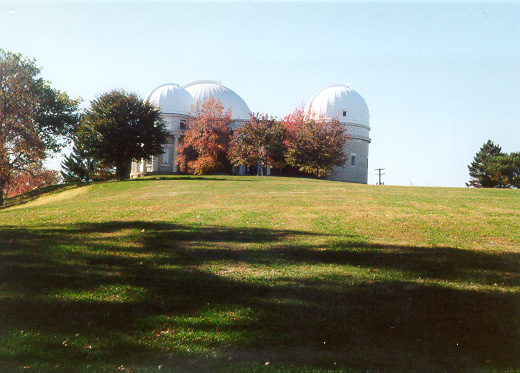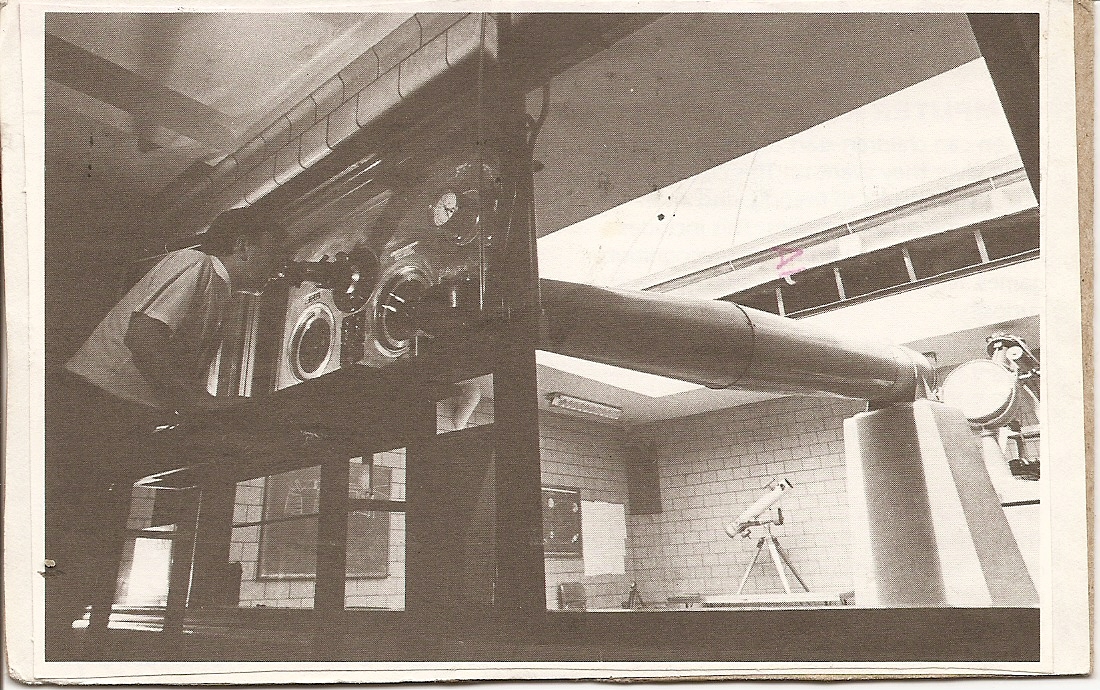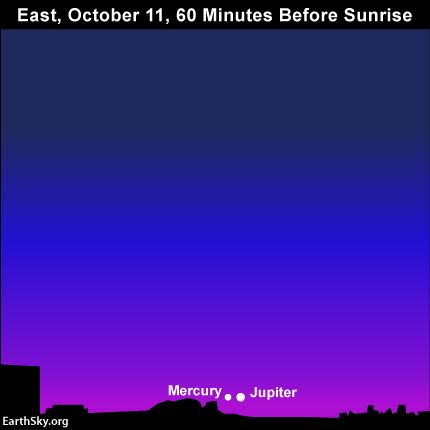
The hypothesized existence of a large "Planet Nine" is expected to be 2-to-4 times the diameter of the Earth, similar to the ice giants of the Outer Solar System such as Neptune.
(Image Sources: Wikipedia.org , By PlanetUser - Own work, CC BY-SA 4.0, https://commons.wikimedia.org/w/index.php?curid=50527705 )
By Glenn A. Walsh
Reporting for SpaceWatchtower
Although all eight planets seem to
orbit the Sun in a common plane of our Solar System, a long-standing
astronomical puzzle has been why the Sun seems tilted 6 degrees from
that common plane. Now, scientists hypothesize that the Sun is not
tilted away from the plane of the Solar System, but the plane of the
Solar System is tilting away from the Sun. And, the cause may be a
gravitational effect from the yet-to-be found “Planet Nine.”
For centuries, scientists have
speculated that one or more planets exist further out in the Solar
System from the 6 planets (including the Earth) known since
antiquity. The search for additional planets resulted in the
discovery of Uranus (1781), Neptune (1846), Pluto (1930), and, more
recently, several Kuiper Belt asteroids. About a decade ago, Pluto
was reclassified as a Dwarf Planet, due to its similarities to other
objects in the Kuiper Belt.
However, astronomers have continued to
propose that one or more large planets, at extreme distances from our
Sun, may still exist. More recently, in 2014, the existence of a
Planet Nine has been inferred from similarities in the orbits of two
Trans-Neptunian Objects (TNOs: Sedna and 2012 VP) by astronomers Chad
Trujillo of the Gemini Observatory in Hawaii and Scott S. Sheppard of
the Carnegie Institution of Washington.
On January 20, California Institute of
Technology (Cal-Tech) researchers Konstantin Balygin and Michael E.
Brown used computer simulations and mathematical modeling to propose
that a massive planetary body exists beyond the orbit of Neptune.
Based on these calculations, they suggest that the orbit of Planet
Nine could be tilted as much as 30 degrees away from the plane of the
Solar System. And of course, what could have caused such a large tilt
in the orbit of Planet Nine is another great mystery.
Cal-Tech graduate student Elizabeth
Bailey led a follow-up study which looked at the age-old question:
Why is the Solar System tilted from the Sun? “Because Planet Nine
is so massive and has an orbit tilted compared to the other planets,
the Solar System has no choice but to slowly twist out of alignment,”
said Ms. Bailey.
This-past Wednesday (October 19),
during a joint meeting of the American Astronomical Society's
Division of Planetary Sciences and the European Planetary Science
Congress in Pasadena, California, Dr. Brown suggested that such a
massive body, as the hypothesized Planet Nine, could actually “tilt
the Solar System.”
This proposed Planet Nine would likely
have 2-to-4 times the diameter of, and 10 times the mass of, the
Earth; it could be as large as Neptune. At its aphelion, or farthest
point from the Sun, it could be as far as 155 billion miles / 249
billion kilometers away from the Sun (20 times further from the Sun
than Neptune); the planet's perihelion, or closest point to the Sun,
could be 19 billion miles / 30 billion kilometers. At aphelion, only
our largest telescopes might have a chance of finding it. However, if
it is closer (as a planet is only at aphelion once during its orbital
period), smaller telescopes might have a chance to see it. It is
estimated that Planet Nine may take around 17,117 years to make one
orbit around the Sun!
In explaining how Planet Nine's gravity
could affect the orbits of the other planets of the Solar System, Dr.
Brown said at the October 19 meeting, “It’s so far away that it
essentially gets this huge lever arm on the Solar System, and it
slowly tilts the planets in its direction.”
“It’s really hard for me to think
that the Solar System could be doing all that it’s doing without
there being a massive planet out there,” he added.
Dr. Renu Malhotra, a University of
Arizona planetary scientist, agrees with the Cal-Tech findings. She
cited four objects, deep in the Kuiper Belt which have a synchronized
orbital pattern, which may be affected by Planet Nine. In fact, she
says that the only way these four objects could orbit in such a
pattern is if “they are in resonance with an unseen massive
planet.”
The search is now on for Planet Nine.
With several large telescopes looking for the massive planet, Dr.
Brown believes, “By the end of next winter, there will be enough
people looking at it that I think somebody will track this down.”
He certainly thinks it will be found within three years.
Once found, Dr. Brown thinks that a space probe would take about 20 years to reach Planet Nine, if the probe was sent on a powered, sling-shot fly-by around the Sun.
Once found, Dr. Brown thinks that a space probe would take about 20 years to reach Planet Nine, if the probe was sent on a powered, sling-shot fly-by around the Sun.
Internet Links to Additional Information ---
2016 October 21 Radio Interview (5:23) on "Science Friday" with Caltech researcher Konstantin Batygin Regarding Planet Nine:
Link >>> http://www.sciencefriday.com/segments/it-was-totally-planet-nine/
Planet Nine: Link >>> https://en.wikipedia.org/wiki/Planet_Nine
Trans-Neptunian Object (TNO): Link >>> https://en.wikipedia.org/wiki/Trans-Neptunian_object
Kuiper Belt: Link >>> https://en.wikipedia.org/wiki/Kuiper_belt
Oort Cloud: Link >>> https://en.wikipedia.org/wiki/Oort_cloud
Powered, Sling-shot Fly-by: Link >>> https://en.wikipedia.org/wiki/Oberth_effect
Related Blog Post ---
"Another Odd Object Found Beyond Neptune!" 2016 Aug. 16.
Link >>> http://spacewatchtower.blogspot.com/2016/08/another-odd-object-found-beyond-neptune.html
Source: Glenn A. Walsh Reporting for SpaceWatchtower, a project of Friends of the Zeiss.
2016 Oct. 22.

2016: 75th Year of Pittsburgh's Buhl Planetarium Observatory
Link >>> http://spacewatchtower.blogspot.com/2016/01/astronomical-calendar-2016-january.html
Like This Post? - Please Share!
More Astronomy & Science News - SpaceWatchtower Twitter Feed:
Link >>> https://twitter.com/spacewatchtower
Astronomy & Science Links: Link >>> http://buhlplanetarium.tripod.com/#sciencelinks
Want to receive SpaceWatchtower blog posts in your inbox ?
Send request to < spacewatchtower@planetarium.cc >.
gaw
Glenn A. Walsh, Project Director, Friends of the Zeiss: < http://buhlplanetarium.tripod.com/fotz/ >
& SpaceWatchtower Editor / Author: < http://buhlplanetarium2.tripod.com/weblog/spacewatchtower/gaw/ >
Electronic Mail - < gawalsh@planetarium.cc >
Astronomy Links: < http://buhlplanetarium.tripod.com/#astrolinks >
Science Links: < http://buhlplanetarium.tripod.com/#sciencelinks >
SpaceWatchtower Twitter News Feed: < https://twitter.com/spacewatchtower >
SpaceWatchtower Blog: < http://spacewatchtower.blogspot.com/ >
LibraryWatchtower Blog: < http://librarywatchtower.blogspot.com >
South Hills Backyard Astronomers Blog: < http://shbastronomers.blogspot.com/ >
Barnestormin Blog: Writing, Essays, Pgh. News, etc.: < http://www.barnestormin.blogspot.com/ >
Author of History Web Sites on the Internet --
* Buhl Planetarium, Pittsburgh:
< http://www.planetarium.
* Adler Planetarium, Chicago:
< http://adlerplanetarium.
* Astronomer, Educator, Optician John A. Brashear:
< http://johnbrashear.tripod.com >
* Andrew Carnegie & Carnegie Libraries:
< http://www.andrewcarnegie.
* Civil War Museum of Andrew Carnegie Free Library:
< http://garespypost.tripod.com >
* Duquesne Incline cable-car railway, Pittsburgh:
< http://inclinedplane.tripod.
* Public Transit:
< http://andrewcarnegie2.tripod.

2016: 75th Year of Pittsburgh's Buhl Planetarium Observatory
Link >>> http://spacewatchtower.blogspot.com/2016/01/astronomical-calendar-2016-january.html
Like This Post? - Please Share!
More Astronomy & Science News - SpaceWatchtower Twitter Feed:
Link >>> https://twitter.com/spacewatchtower
Astronomy & Science Links: Link >>> http://buhlplanetarium.tripod.com/#sciencelinks
Want to receive SpaceWatchtower blog posts in your inbox ?
Send request to < spacewatchtower@planetarium.cc >.
gaw
Glenn A. Walsh, Project Director, Friends of the Zeiss: < http://buhlplanetarium.tripod.com/fotz/ >
& SpaceWatchtower Editor / Author: < http://buhlplanetarium2.tripod.com/weblog/spacewatchtower/gaw/ >
Electronic Mail - < gawalsh@planetarium.cc >
Astronomy Links: < http://buhlplanetarium.tripod.com/#astrolinks >
Science Links: < http://buhlplanetarium.tripod.com/#sciencelinks >
SpaceWatchtower Twitter News Feed: < https://twitter.com/spacewatchtower >
SpaceWatchtower Blog: < http://spacewatchtower.blogspot.com/ >
LibraryWatchtower Blog: < http://librarywatchtower.blogspot.com >
South Hills Backyard Astronomers Blog: < http://shbastronomers.blogspot.com/ >
Barnestormin Blog: Writing, Essays, Pgh. News, etc.: < http://www.barnestormin.blogspot.com/ >
Author of History Web Sites on the Internet --
* Buhl Planetarium, Pittsburgh:
< http://www.planetarium.
* Adler Planetarium, Chicago:
< http://adlerplanetarium.
* Astronomer, Educator, Optician John A. Brashear:
< http://johnbrashear.tripod.com >
* Andrew Carnegie & Carnegie Libraries:
< http://www.andrewcarnegie.
* Civil War Museum of Andrew Carnegie Free Library:
< http://garespypost.tripod.com >
* Duquesne Incline cable-car railway, Pittsburgh:
< http://inclinedplane.tripod.
* Public Transit:
< http://andrewcarnegie2.tripod.



